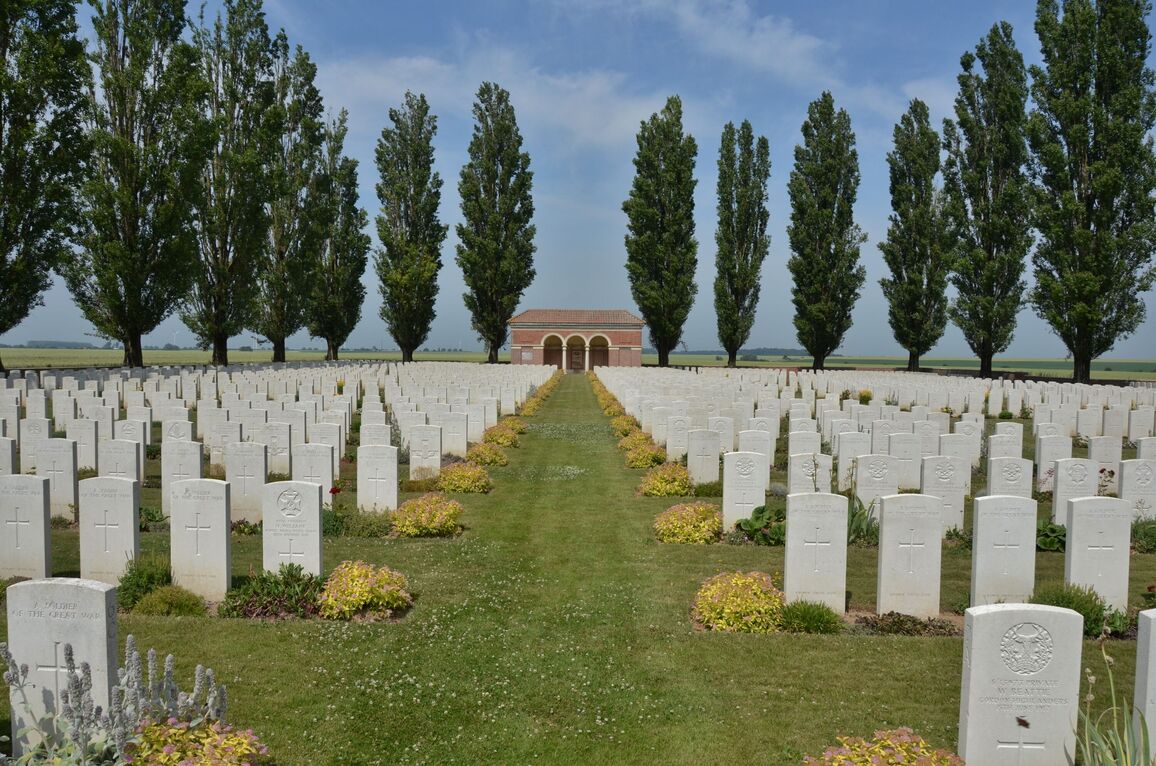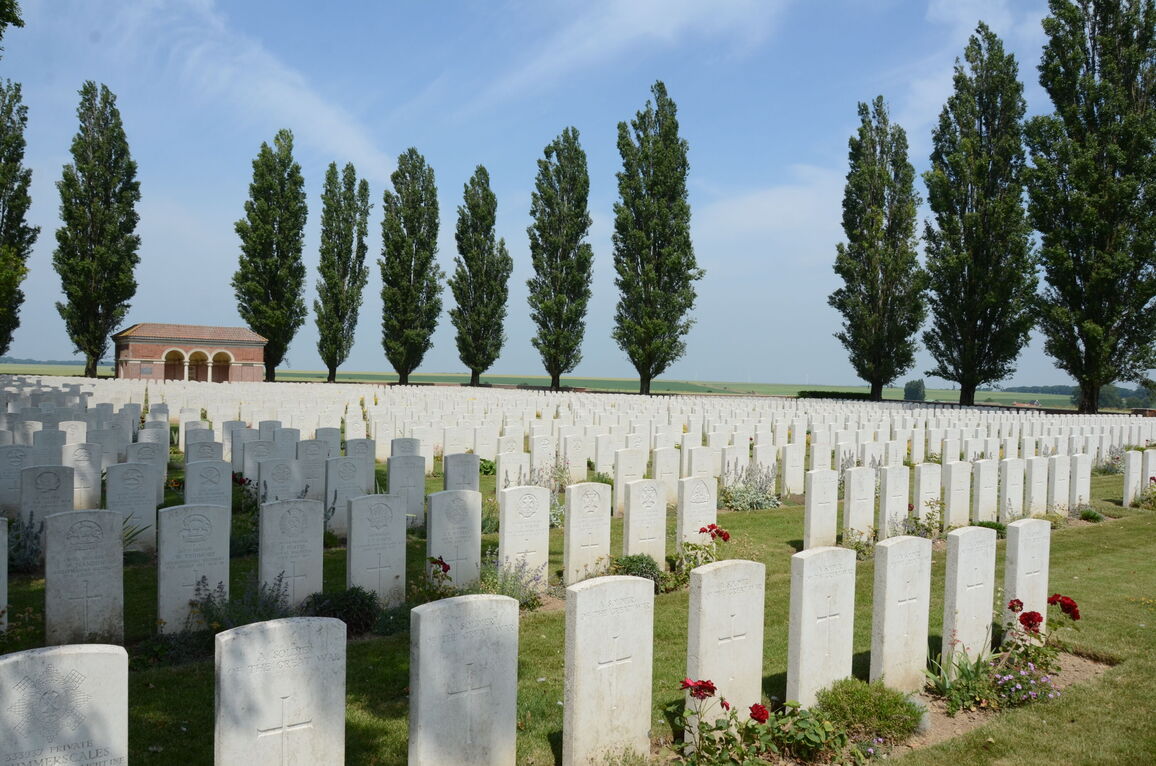H.A.C. Cemetery, Ecoust-St. Mein
- Country France
- Total identified casualties 831 Find these casualties
- Region Pas de Calais
- Identified casualties from First World War
- GPS Coordinates Latitude: 50.17209, Longitude: 2.90504
Location information
Ecoust-St.Mein is a village between Arras, Cambrai and Bapaume. H.A.C. Cemetery is about 800 metres south of the village on the west side of the D956 road to Beugenatre.
Visiting information
A grassed ramp way beside the steps at the entrance of this cemetery makes access possible for accompanied wheelchair users.
History information
The enemy positions from Doignies to Henin-sur-Cojeul, including the village of Ecoust, were captured on 2 April 1917, by the 4th Australian and 7th Divisions. This cemetery was begun by the 7th Division after the battle, when 27 of the 2nd H.A.C., who fell (with one exception) on the 31st March or the 1st April, were buried in what is now Plot I, Row A. After the German counter-attack near Lagnicourt on the 15th April, twelve Australian gunners were buried in the same row. Rows B, C and part of D were made in August and September 1918, when the ground had been recaptured by the 3rd Division after five months enemy occupation. The 120 graves thus made were the original H.A.C. Cemetery; but after the Armistice graves were added from the battlefields of Bullecourt and Ecoust and from a number of smaller burial grounds, including:-
BARASTRE COMMUNAL CEMETERY GERMAN EXTENSION, which contained 284 German graves, 46 French, and those of 39 soldiers from the United Kingdom, four from New Zealand and one from Australia.
BULLECOURT CHURCHYARD, which contained the graves of two airmen from the United Kingdom, and BULLECOURT GERMAN CEMETERY (South of the village, just beyond the railway line), in which 200 German soldiers and 30 from the United Kingdom were buried. Bullecourt was the scene of very fierce fighting from the 3rd to the 17th May 1917, on the 21st March 1918, and on the 31st August and the 1st September 1918.
CAGNICOURT COMMUNAL CEMETERY GERMAN EXTENSION, which contained 333 German and six Russian graves, and those of 17 soldiers from the United Kingdom and one from Australia.
CROISILLES GERMAN CEMETERIES, both on the road to Ecoust, which contained, in total, the graves of 505 German soldiers, one French, and eleven from the United Kingdom.
EPINOY CHURCHYARD, which contained the graves of three airmen from the United Kingdom and one from Canada, as well as 136 German graves. The church was destroyed in the War.
IMPERIAL CEMETERY, 800 metres West of HENDECOURT-LESCAGNICOURT, which contained the graves of ten soldiers and two sailors from the United Kingdom and seven Canadian soldiers, who fell in August-September 1918.
INCHY-EN-ARTOIS CHURCHYARD, which contained the grave of one R.N.A.S. officer.
LECLUSE CHURCHYARD, which contained the grave of one R.F.C. officer.
L'HOMME MORT CEMETERY No.2, ECOUST-ST. MEIN (between L'Homme Mort and Vraucourt), which contained the graves of 19 soldiers from the United Kingdom who fell in August-September 1918.
MARQUION GERMAN CEMETERY, in the village of Marquion. It contained the graves of 211 German soldiers, eight Russian, and 17 from the United Kingdom.
MORY-ECOUST ROAD CEMETERIES No.1 AND No.2, ECOUST-ST. MEIN, both very near the road. They were made in March, April and May 1917, and they contained the graves of 63 soldiers from the United Kingdom (almost all 8th and 9th Devons and R.F.A.) and one from Australia.
QUEANT GERMAN CEMETERY, at the North-East exit of the village, which contained the graves of 22 soldiers from the United Kingdom who fell in March, 1918.
VILLERS-LES-CAGNICOURT COMMUNAL CEMETERY, which contained the graves of 25 German soldiers and two from the United Kingdom.
There are now nearly 2,000, 1914-18 war casualties commemorated in this site. Of these, over half are unidentified and special memorials are erected to 17 soldiers from the United Kingdom and 14 from Australia, known or believed to be buried among them. Other special memorials record the names of 34 soldiers from the United Kingdom, buried in other cemeteries, whose graves were destroyed by shell fire.
The cemetery covers an area of 5,801 square metres and is enclosed by a low red brick wall.









